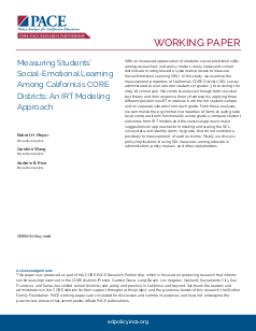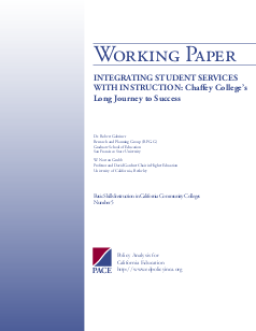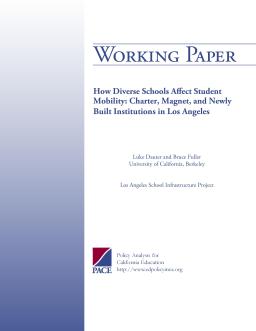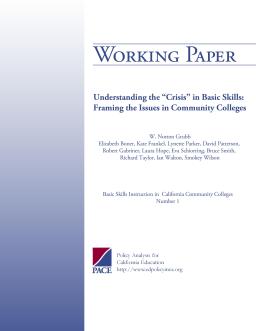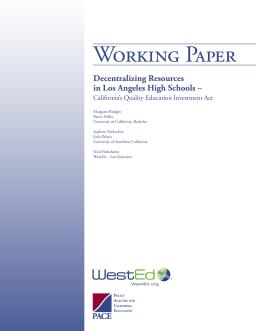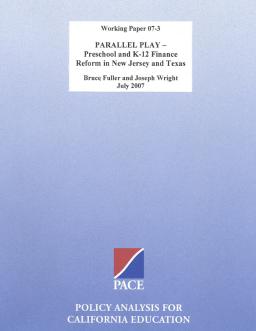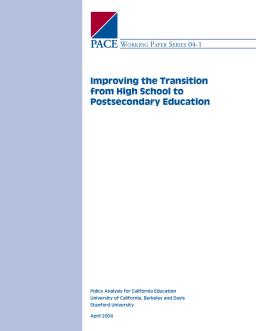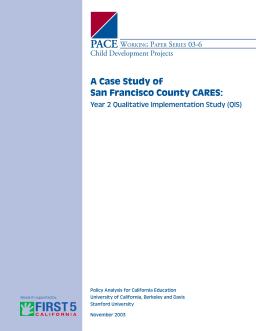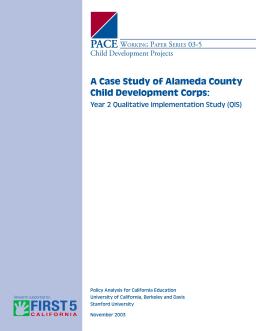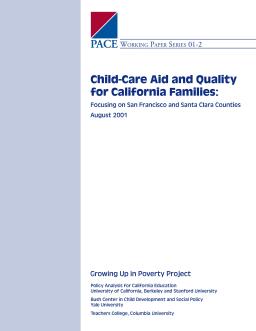Published
Summary
This report examines the stability of school effects on social-emotional learning (SEL) over two years in California's CORE districts. The correlations among school effects in the same grades across different years are positive but lower than those for math and ELA. While these effects measure real contributions to SEL, their low stability draws into question whether including them in school performance frameworks and systems would be beneficial.
An IRT Modeling Approach
Published
Summary
This study examines the properties of California's CORE Districts' SEL survey, which measures social-emotional learning in students. The survey was given to over 400,000 students in grades 3-12. The study uses both classical test theory and item response theory frameworks to analyze the data and make recommendations for modeling and scaling SEL survey data. Policy implications are discussed for educators, administrators, policy makers, and other stakeholders.
Chaffey College’s Long Journey to Success
Published
Summary
Chaffey College in California's Inland Empire is renowned for its "risk tolerant change-oriented culture" and impressive student support programs, which have led to exceptional outcomes for Chaffey students. In this working paper, researchers visited Chaffey and other California colleges to examine the quality of instruction in basic skills and the integration of student support services. Chaffey's success story highlights the importance of developing a broad structure necessary for success both in developmental education and for all students.
Charter, Magnet, and Newly Built Campuses in Los Angeles
Published
Summary
This paper examines the impact of pupil mobility in urban districts like Los Angeles, where families are encouraged to switch schools due to the growth of mixed-markets of charter, magnet, and pilot schools. African American and White students are more likely to exit their schools, while overcrowding in low-income Latino neighborhoods leads to higher exit rates. Charter and magnet school students exit less. The district's commitment to relieve overcrowding leads to Latino students moving to newly built schools. The opening of new high schools reduced pupil mobility.
Framing the Issues in Community Colleges
Published
Summary
This paper series addresses the issue of basic skills instruction in California Community Colleges. The problem is twofold: a high proportion of students enter college needing developmental courses, and these students are unlikely to move into college-level work. The research focuses on instructional issues, with observations and interviews to understand classroom and institutional settings. The subsequent papers in the series will cover various hypotheses for why success rates in basic skill instruction are not higher.
California’s Quality Education Investment Act
Published
Summary
This working paper examines the use of Quality Education Investment Act (QEIA) funds, which allocated $2.6B over seven years to California's lowest-performing schools. The authors conducted a study of four Los Angeles high schools to investigate how QEIA dollars were spent in the first year, who made the decisions, and how funds were used to improve teaching and the instructional program. The study found that district officials and principals had discretion in allocating funds, consistent with recent efforts to deregulate categorical-aid programs and give local educators fiscal discretion.
The Quality Teacher and Education Act in San Francisco
Published
Summary
This policy report reviews the approval of Proposition A, a parcel tax initiative in the San Francisco Unified School District, which aimed to improve teacher salaries and fund innovative compensation programs. The report includes an assessment of the programs funded by the tax revenues, and is based on interviews and public documents.
Preschool and K–12 Finance Reform in New Jersey and Texas
Published
Summary
This working paper examines factors that affect student achievement in California schools, finding that family background and school context are important determinants. The report recommends that schools focus on providing high-quality instruction, improving reading and math skills, and creating a positive school climate. Policymakers should increase resources for under-resourced schools and promote parental involvement. Continued research is needed to better understand the complex factors that shape student outcomes.
Published
Summary
The Bridge Project, a study of K-16 issues, presents three papers on college transition. The first finds a widespread lack of knowledge about college requirements and readiness among California students and parents. The second analyzes how students receive vague signals about academic college readiness. The third provides an example of how to improve K-16 transition and send clearer academic standards signals. Policy implications include low or no-cost recommendations to address these issues.
Year 2 Qualitative Implementation Study (QIS)
Published
Summary
This paper assesses the perspectives and experiences of stakeholders on San Francisco County’s CARES program, a childcare retention–incentive program. Year 2 saw over a threefold increase in the number of stipends awarded, but recipients felt the program couldn't address ECE staff retention/turnover alone. Solutions need to be implemented within a larger system of support, raising public awareness, expanding professional development opportunities, and exerting pressure on policymakers for sustained funding to augment ECE staff salaries.
Year 2 Qualitative Implementation Study (QIS)
Published
Summary
This paper discusses the second year of Alameda County’s Child Development Corps program as a childcare retention-incentive program. The program's goals were to encourage staff training, professional development, and establish a strong network of ECE professionals. Stipend recipients were pleased with the program but recognized that it could not function alone in addressing staff retention, and a larger system of support and advocacy was necessary.
Focusing on San Francisco and Santa Clara Counties
Published
Summary
This report analyzes California's early childhood education programs and finds that attending public preschool programs improves school readiness and academic performance, particularly for low-income children. The study also shows that the economic benefits of preschool programs far outweigh the costs, including increased earnings and decreased need for remedial education and social services. Recommendations include expanding access to high-quality preschool programs for low-income children in California to reduce economic inequality.

